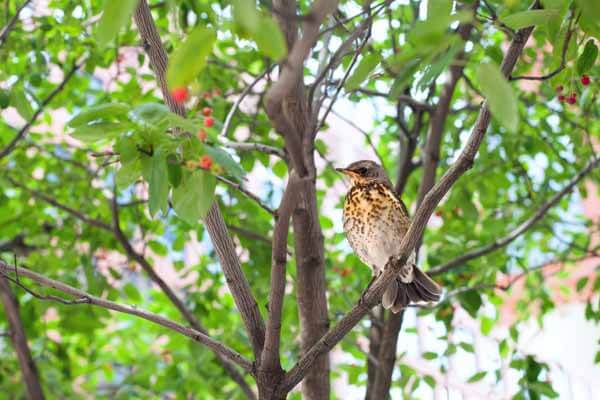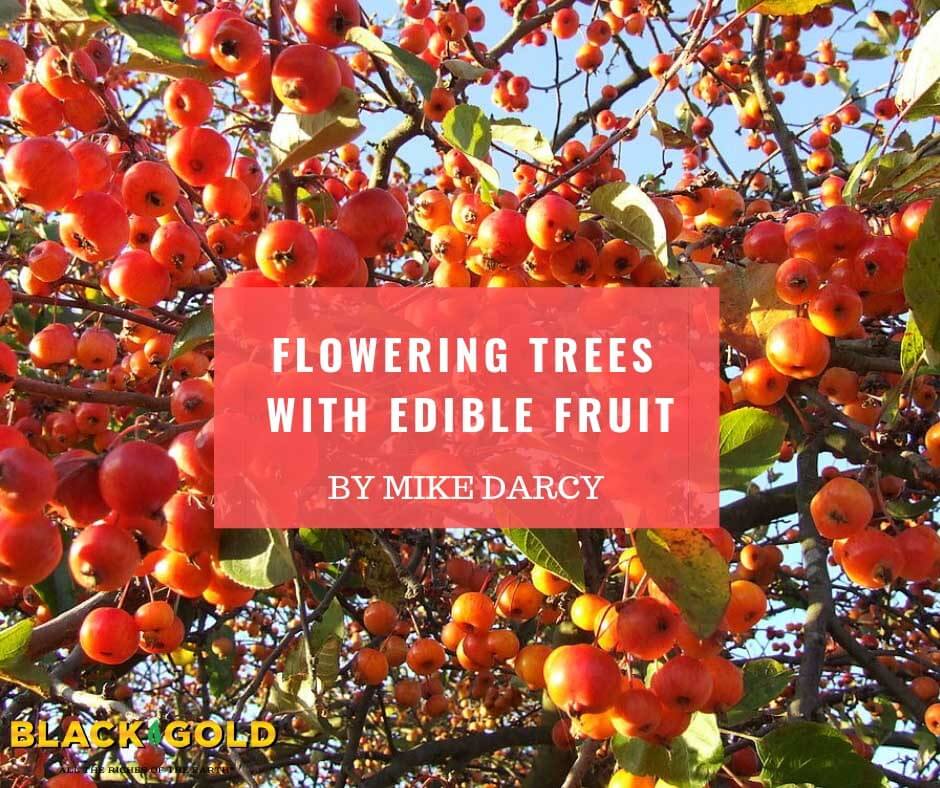
Sometimes in our home yards and gardens, we plant primarily for ornamental purposes, but perhaps we overlook the fact that attractive plants can also provide food. The following flowering trees have both attributes. All are easily grown in western Oregon and Washington and garden-worthy, even without their food value.
Serviceberry
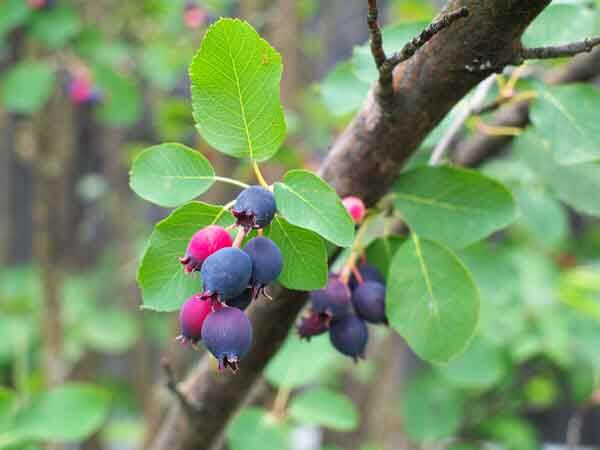
Amelanchier alnifolia is not exactly a household name, nor is it a name many gardeners find familiar, but call it western serviceberry or just saskatoon, and many would recognize it. Western serviceberry is a popular Oregon native plant that is often used in gardens, especially those with a slant toward native plants. It is a superb selection for a garden as it has clusters of white flowers in the spring that are attractive to bees and butterflies and then produces berries in the summer that can be eaten fresh or used to make pies, jams, or jellies. In the autumn, the leaves will often turn bright red for some nice fall color.
Western serviceberry is said to have the best-tasting fruit of the genus, but others say the hybrid Amelanchier x grandiflora also has delicious fruit. The hybrid is also easier to find at nurseries. Try the cultivar Autumn Brilliance®, which boasts spectacular red fall color.
Serviceberry might be considered a large shrub or small multi-stemmed tree, as plants can reach about 15 ft in height. Often found growing naturally along stream banks, it seems to grow equally well in open wooded areas and will probably perform best in a partially shaded home garden setting. Before planting, amend soils with Black Gold Canadian Sphagnum Peat Moss or Black Gold Garden Compost Blend. Plants will need supplemental water for the first couple of years to become established and then can usually survive without additional water.
Olives
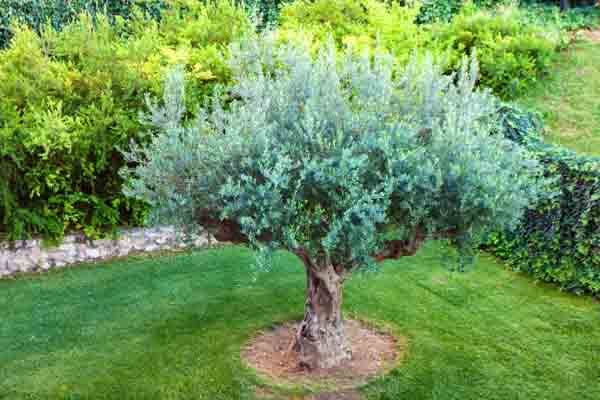
When we think of olive trees (Olea europaea), we probably think of olive groves in Spain, Greece, or the numerous olive groves in California. Olives are native to the Mediterranean region, but they have adapted well in California. Recently there has been an increased interest in olives as a garden plant for northwest gardens. ‘Arbequina‘ is a widely available compact olive tree, reaching just 8 to 10 feet, has that is reported to be remarkably cold hardy, surviving winters to USDA Hardiness Zones 7-9.
Olive foliage is gray-green and stands out against homes or other garden greenery. Cold hardiness is the deciding factor on whether olives will become widely planted in home gardens. Currently, at the Oregon State University North Willamette Research and Extension Center in Aurora, OR, there is an olive cold hardiness trial being conducted.
Edible Crabapples
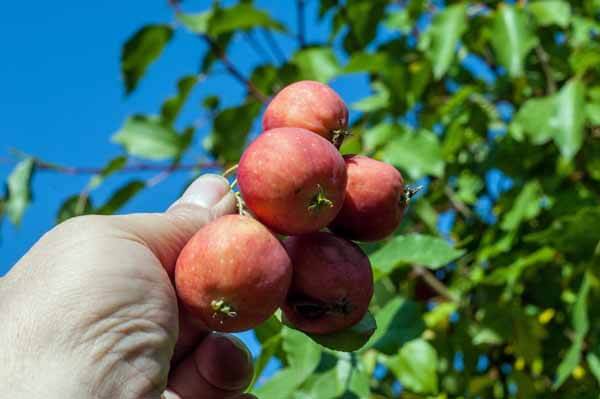
Another group ornamental trees that provide spring color and fall fruit are true edible crabapples. Malus ‘Chestnut’ is just such a tree. This crabapple will reach about 15 ft in height and needs a full sun location. White flowers cover the tree in spring, and in fall, it produces large, red-blushed fruits. The sweet, nutty fruits are excellent for canning or jelly. They can even be eaten fresh.
Another edible flowering crabapple is the diseases-resistant heirloom ‘Hopa’, which reaches 25 feet. In spring, it bears clusters of fragrant, rose-pink flowers, and edible red fruit is produced in quantity in the fall, followed by yellow fall foliage. Its large, tart crabapples are best used for jam and jelly.
Cornelian Cherry
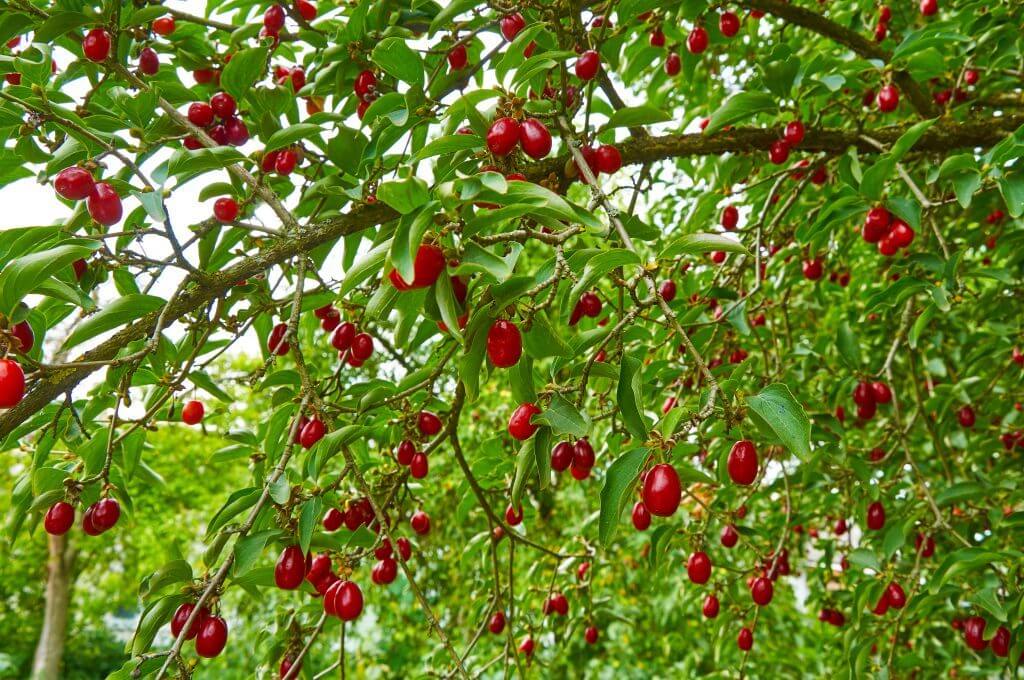
There are many dogwoods to chose from, but one of my favorites is Cornelian cherry (Cornus mas), a small tree reaching 15-25 feet. This dogwood blooms very early, even before the tree has leaves. The clusters of yellow blossoms appear on bare twigs in late winter, which are quite pleasant to see on a dreary winter day. In the fall, cherry-like red fruits appear, which can be used to make preserves, if you can get them picked before the birds get them! The fall color is usually yellow, and with the red fruit, it makes for an eye-catching display. The bare branches have gray and tan blotches for winter interest.
Peaches and Plums
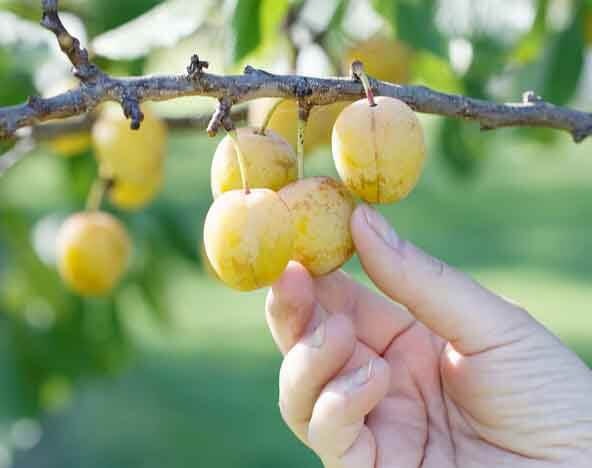
Some more standard fruiting trees are also bestowed with beauty as well as delicious fruit. The peach Red Baron (12-18 feet) has spectacular double-red blossoms in spring followed by delicious golden peaches that ripen mid to late season. And, the exceptionally hardy ‘Shiro‘ (18-20 feet) golden plum produces clouds of white flowers in spring, loads of small clingstone golden plums in summer, and develops beautiful fall foliage of red, orange and gold.
This is just a sampling of some of the many trees and shrubs that can provide a multi-purpose plant in our gardens. Talk with other gardeners in your neighborhood, and you may be surprised at the choices you have.
